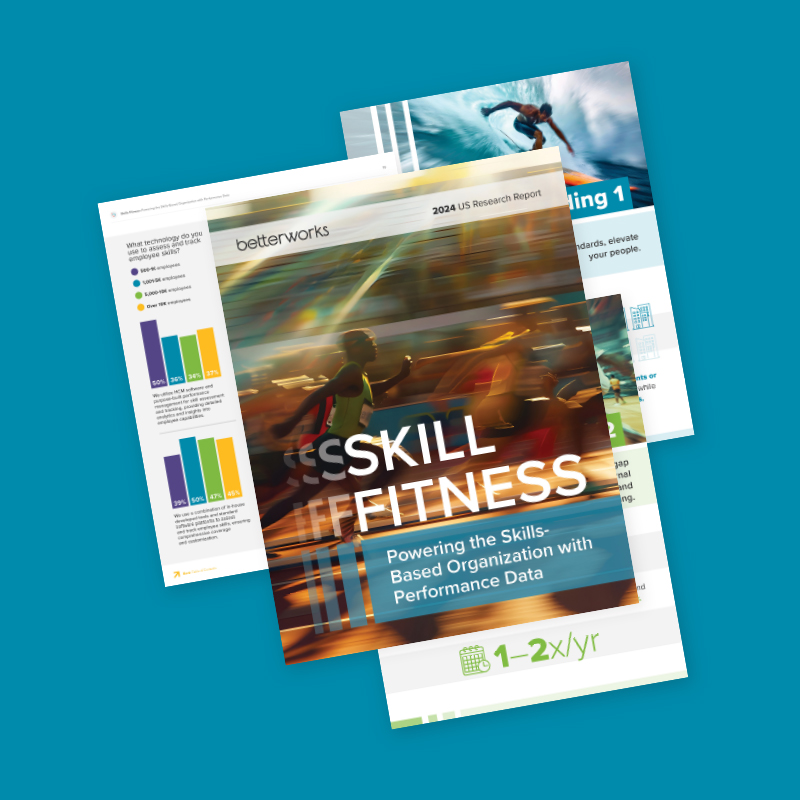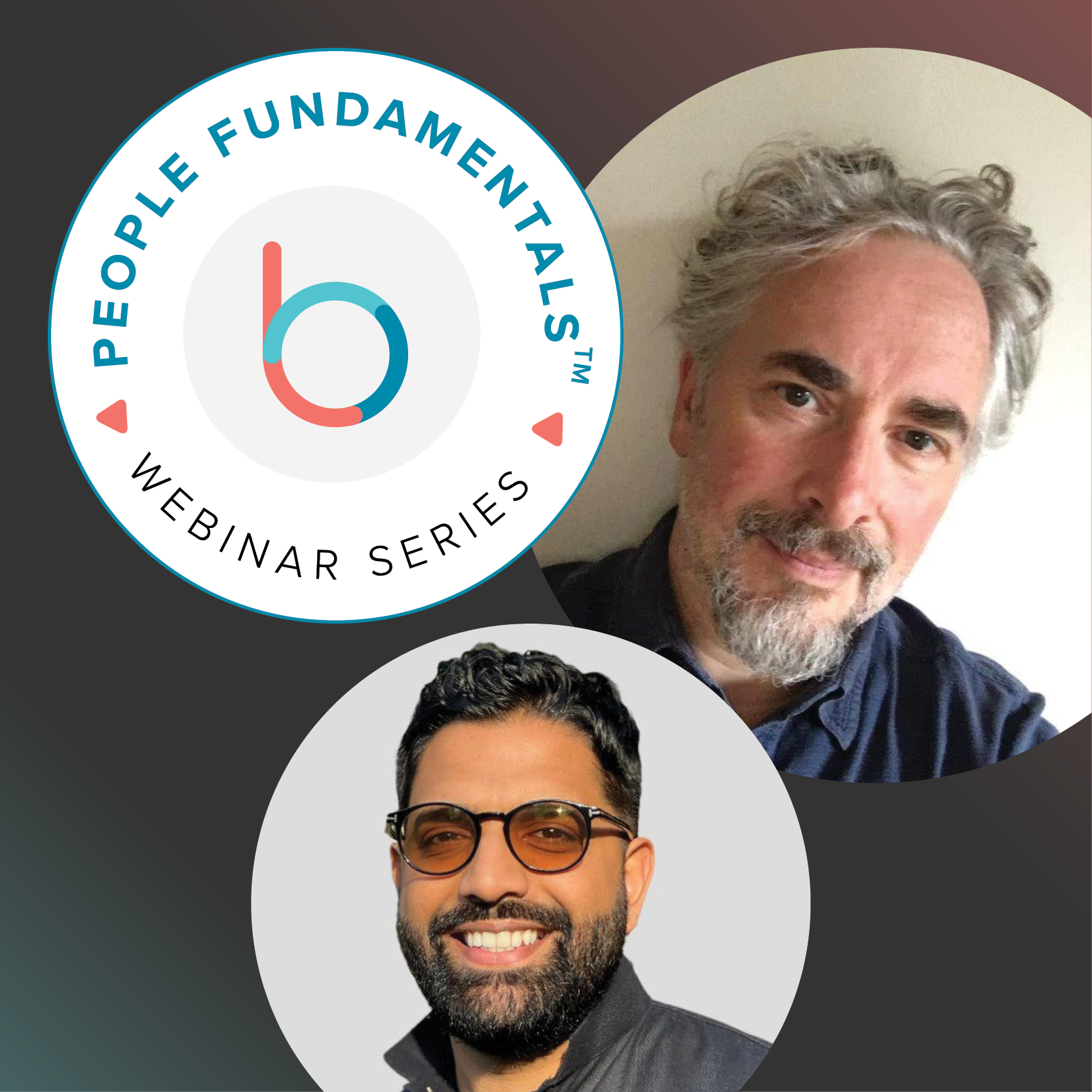Nearly 8 in 10 organizations have adjusted job requirements or lowered hiring standards due to a lack of qualified candidates, while current employees need more time at work to learn skills. This was one of the eye-opening findings in the recent Betterworks report, Skill Fitness: Powering the Skills-Based Organization with the Right Data, released today.
Companies are challenged to both find best-fit outside candidates and identify and cultivate existing talent. The ability to adapt quickly has never been more critical. With new generations entering the workforce, the baby boomer retirement wave, and disruption due to technological innovations including AI, the skills that organizations need to support current and future innovation are changing faster than the workforce can adapt. Without these skills in the workforce, companies are unable to transform to keep pace with change, let alone innovate to stay ahead.
To stay competitive, many organizations are turning to a skills-based model that allows them to respond quickly to changes while also enhancing employee engagement by providing clear growth and development opportunities.
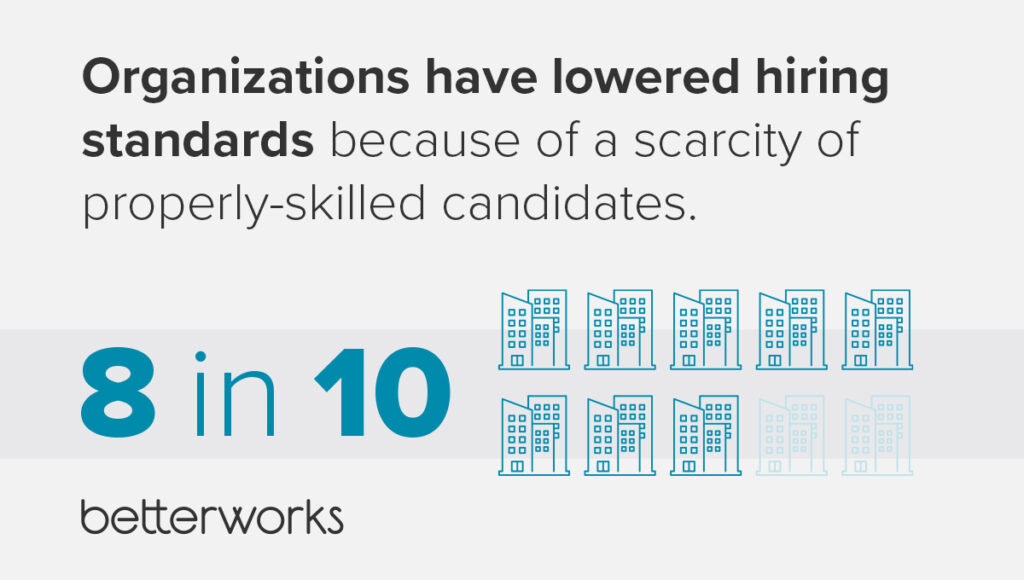
“A skills-focused approach values employees based on what they bring to meet current challenges rather than just their roles and goals. By focusing on individual skills, organizations can tap into a deeper pool of internal talent, enhancing their agility and achieving greater retention, performance, and internal mobility while also improving succession planning,” said Doug Denneline, CEO of Betterworks.
A desert-like talent landscape, where the talent pool is like an elusive oasis, coupled with more pressure on bottom lines and constrained hiring capabilities, has required HR leaders to find internal springs of talent that can be developed into broader pools. Recognizing these opportunities, Betterworks conducted an extensive survey of over 1,100 HR leaders and non-HR managers in the United States to understand how organizations assess their skills capabilities, identify skills gaps, and work to close them.
Successful internal talent development requires knowing precisely which skills are needed and which ones already exist or are being developed within the organization – and making progress to close those skills gaps. Organizations use a variety of skills assessments to understand what capabilities they have in-house. However, what may be lacking is granular, timely, and verifiable skills data that would enable better decision-making and ensure that employees are developed in ways that align with both current and future needs.
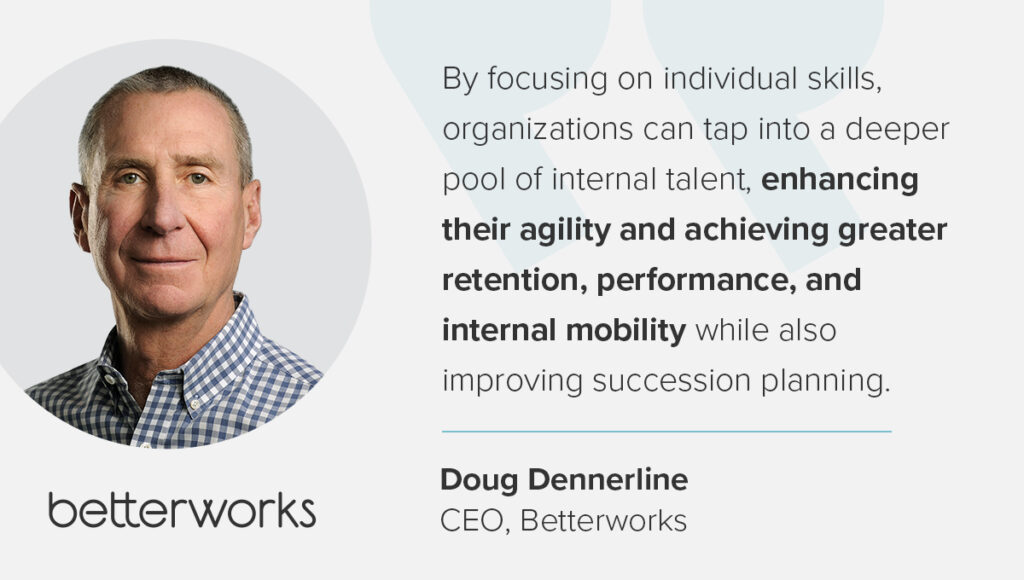
Pinpointing weaknesses in internal skill building
The survey revealed five significant shortcomings in how organizations currently manage their skills:
- Outdated and incomplete skills data: Many companies lack up-to-date, detailed information about the skills within their workforce, leading to unnecessary hiring and a reliance on lower hiring standards when new talent is brought in.
- Over-reliance on infrequent performance evaluations: While companies use various methods to assess internal skills, most rely on infrequent performance evaluations, which often fail to capture an accurate and current picture of employee skills.
- Inadequate manager support: Although most organizations acknowledge the central role of managers in guiding employee development, greater support is needed to elevate managers to become effective coaches. Two in five say more coaching and mentoring is needed to close skills gaps.
- Inability to address individual skills gaps: More than 40% of organizations struggle to identify and address individual employee skills gaps, which hinders their ability to grow and adapt.
- Poor use of technology: While most organizations believe that technology plays a critical role in alleviating the skills gap, many still rely on incomplete infrastructures that provide potentially inaccurate data.
To overcome these challenges, it’s essential to integrate learning and development (L&D) with talent development. Leveraging technology to link L&D with performance management processes can elevate internal talent pools, enabling employees to efficiently upskill and reskill in line with strategic business needs.
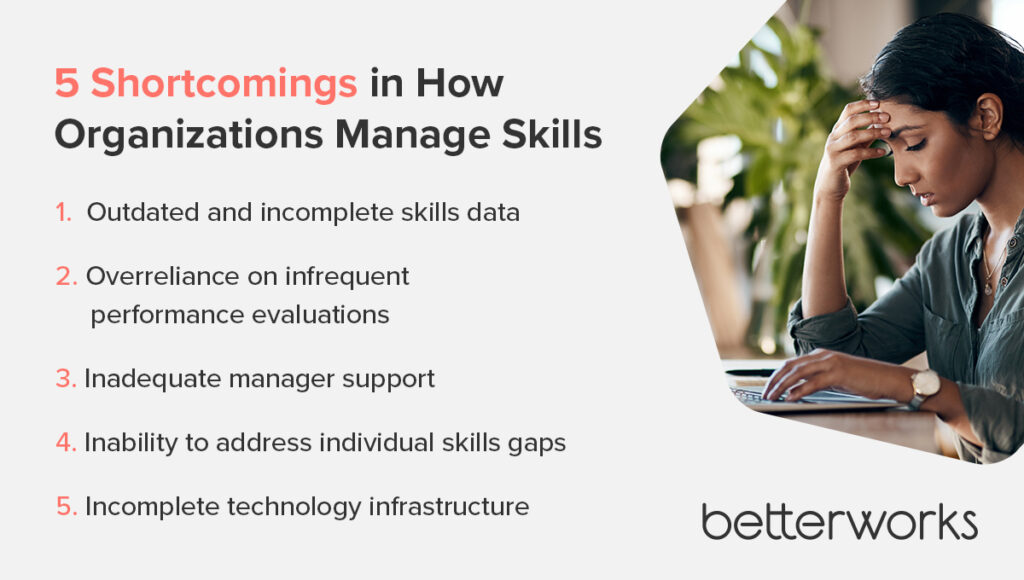
Raising the bar: Invest in your people
The challenges and expense of finding qualified external talent put organizations at risk long-term. To alleviate the skills mismatch, internal skill development must be a priority. However, the survey found that 44% of employees need more time to acquire and upgrade their skills. This is the biggest barrier to participation in skill development programs, with nearly half of managers identifying it as a leading challenge.
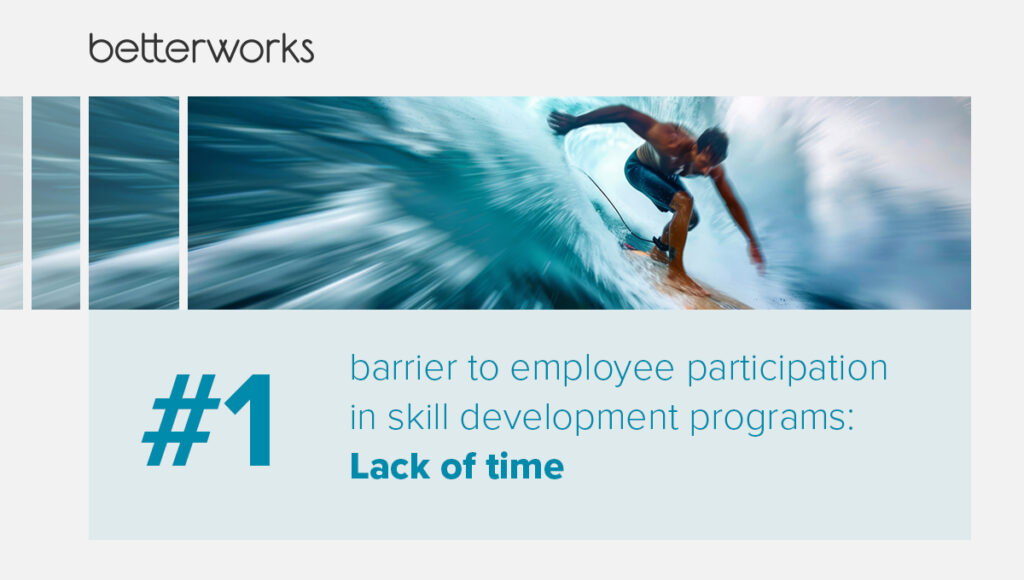
Despite these obstacles, setting aside time for employee training ranked as a top priority across organizations of various sizes. Yet, employee resistance to training, lack of support from leadership, and inadequate access to reliable training options remain perennial problems for HR according to respondents.
Interestingly, while companies focus on skills primarily to improve retention, engagement, and productivity, internal mobility is often a secondary concern. This is surprising given that underutilized internal talent is a challenge for nearly all organizations, and many third-party and Betterworks studies have shown the link between career development and retention. Making internal mobility (aka career development) a top priority provides the “what’s in it for me” aspect for employees.
Betterworks believes that if internal mobility is prioritized as a key driver of upskilling and reskilling initiatives, increased engagement and retention will naturally follow. Internal mobility encourages employees to envision a longer future with their company and offers a more rewarding experience as their employer reinvests in them. Organizations, too, benefit from establishing a strong internal talent pipeline To remain competitive, organizations must refocus on gaining accurate, real-time insights into existing skills and skills gaps, while also tracking skills development through performance management and goal-setting.
Bridging the data gap: Accurate insights lead to better decisions
Another critical issue highlighted by the survey is the gap created by incomplete skills data. Nearly 70% of organizations use performance evaluations to measure skills, but these assessments are often infrequent and fail to capture an accurate and timely view of employee capabilities.
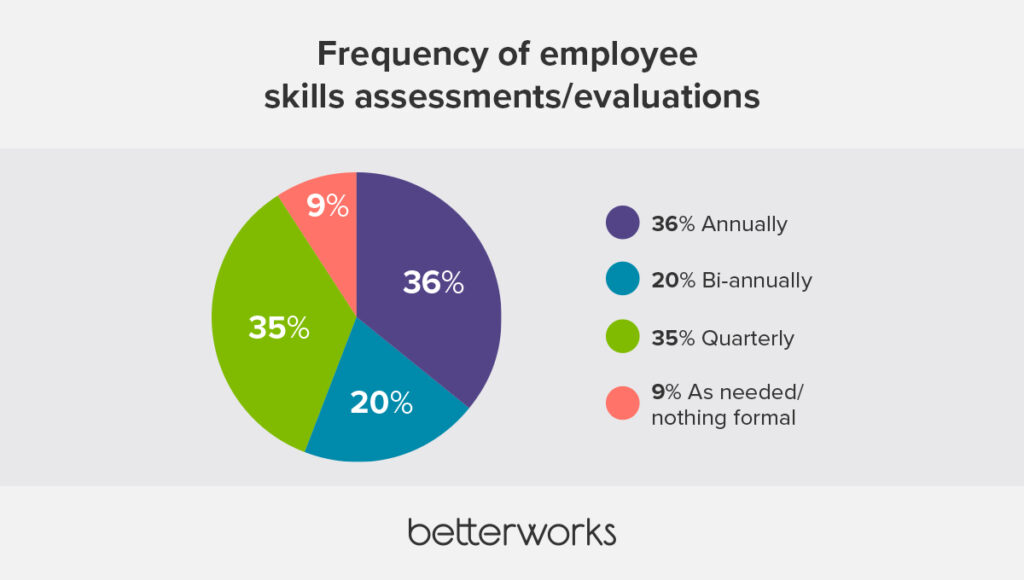
Two-thirds of HR leaders and managers currently rely on input from department heads and team leaders to prioritize skills development. However, if this input is based on infrequent evaluations, the data used may be flawed. Timely and accurate intelligence can be a game-changer, but data flow must keep pace with the strategic importance of skills. Imagine trying to plan a vacation abroad with outdated plane flight information. If you can’t book the best flights on the right day and make your connections, scoping out the rest of your trip becomes challenging and could force you to rearrange your plans.
To bridge this gap, organizations would benefit from performance management systems that promote frequent conversations between managers and employees and capture data on skill development discussions, actions, and verification of skills attained. This data can be captured in a talent profile accessible to talent marketplaces and other platforms, enabling better talent decisions and stronger internal mobility.

Removing barriers to skill-building
Addressing skills gaps requires more than just data; it requires coaching, personalized development plans that incorporate skill building, and adequate investment in training programs. The survey found that organizations’ most significant weaknesses in skills growth were the limited availability of mentoring and coaching programs and challenges in identifying and addressing individual employee skills gaps (43%).
Developing individualized skills plans can help resolve these challenges. Nearly all respondents agree that such plans are important for enabling internal career mobility, so organizations have a clear path forward.
The power of verifiable skills data
The survey revealed that 98% of respondents believe verified skills data is essential for identifying hidden talent. Verified skills data — proven through digital certifications, assessments, or past work — can significantly enhance internal mobility programs.
However, talent marketplaces, once seen as a solution for identifying internal skills, often fall short. They primarily serve as matching services and are not designed to assess competencies or verify skill depth. Organizations need to leverage intelligent performance management systems to collect, validate, and publish skills data, thus supporting succession planning and expanding the talent pipeline.
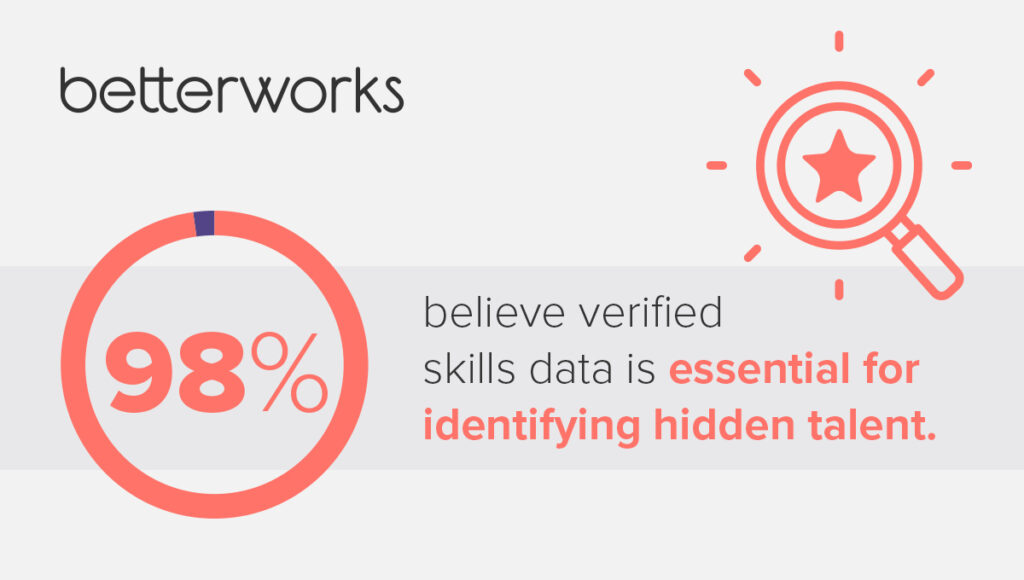
Building a solid foundation for the future
In today’s fast-paced business environment, adopting a skills-based approach is not just a strategy but a necessity. While investments in recruiting and talent marketplaces are essential, the foundation of success lies in having accurate, verifiable skills data, and being able to connect the dots between the strategic needs of the business, missing skills, an accurate and timely view of current internal skills, including those in development, and individual development plans that include skills development as a goal. This will enable organizations to make informed decisions, prepare employees for future challenges, and build a resilient workforce.
To learn more about these findings and how your organization can elevate the workforce, improve retention, and achieve your most ambitious goals, download the full report today.
How fit is your internal skill building?
